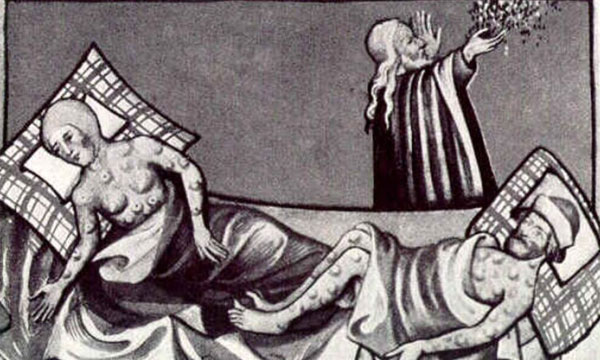Coronavirus has become a well-known name. It’s on TV, on social media, and everywhere we look. But what is a pandemic?
A pandemic means an epidemic of disease that has spread across a vast region affecting masses at the same time around the world.
Coronavirus is not the first pandemic to have grip the world. History is filled with bone-chilling incidents of diseases that have wiped out a mass population and have lasted for several years.
Here are 5 of the worst pandemics in history that have come to an end.
1. Smallpox

You’ve heard of the chickenpox, of course, you have, we all get them at least once in our lifetime. Smallpox was an epidemic that hit Europe, Asia, and Arabia and went on for centuries. This horrible virus killed every 3 out of 10 victims and left the others with scars.
“There hasn’t been a kill off in human history to match what happened in the Americas—90 to 95 percent of the indigenous population wiped out over a century,” says Mockaitis. “Mexico goes from 11 million people pre-conquest to one million.”
After centuries of its reign, Smallpox become the world’s first pandemic to have ended by a vaccine in the late 18th century! World Health Organisation declared the world free on Smallpox officially in 1980.
Pandemic Posters Through The Years & Their Similarities To COVID-19
2. Plague of Justinian

What many individuals are unaware of is that the same bacterium, Yersinia Pestis caused 3 of the deadliest pandemics recorded in the world! The Plague of Justinian hit Constantinople, the capital of the Byzantine Empire, in 541 CE. It arrived from Egypt through the Mediterranean Sea.
Soon, the plague spread like wildfire all across Europe, Asia, North Africa, and Arabia, leaving at least 30-50 million dead, which was estimated to be half of the world’s population.
“People had no real understanding of how to fight it other than trying to avoid sick people,” says Thomas Mockaitis, a history professor at DePaul University. “As to how the plague ended, the best guess is that the majority of people in a pandemic somehow survive, and those who survive have immunity.”
3. The Black Death

The Black Death Europe in 1347 and claimed 200 million lives in a short 4-years. At the time, there was no scientific understanding of how to contain the contagion. However, it was easy to figure out that victims needed to be kept isolated from healthy individuals else they would have caught the virus as well.
In Vietnam, sailors were kept locked-up and isolated on the ship for 30 days in what went on to be named Trentino. Over time, the number of days increased to 40 days, which was then called Quarantine. The term used nowadays, Quarantine, is driven by this word.
4. The Great Plague of London

Right after Black Death, London once again found itself in deep trouble. The plague reappeared every 20 years or so (roughly) and lasted from 1348-1665, with almost 40 outbreaks in between. Every time an eruption would occur, at least 20% of London’s men, women, and children would lose their life.
In the 1500s, England passed laws that demanded those who are sick or those with ill family members to stay home at all costs. If you wanted to go out, you’d had to carry a white pole with you. The last outbreak spell in 1665 killed 100,000 individuals in just seven months span!
Karachi Shopping Areas Sealed After Shopkeepers Violate SOPs
5. Cholera

Cholera is an infectious disease that causes the carrier to have severe watery diarrhea, leading to dehydration and possible death if untreated. This virus is caused by consuming food or water, which is contaminated with Vibrio Cholerae.
The virus spread massive chaos in England in the early to mid 19th century, causing the deaths of tens of thousands of individuals. British doctor John Snow suspected that it was London’s water supply that was the cause. He created a geographic chart to track the outbreaks to pinpoint the origin.
Eventually, Snow’s finding brought the process of urban sanitation into play and has been used since to protect drinking water from any form of contamination.
Which pandemic has you on your toes? Please share your thoughts with us in the comments below.
Stay tuned to Brandsynario for more news and updates.










































